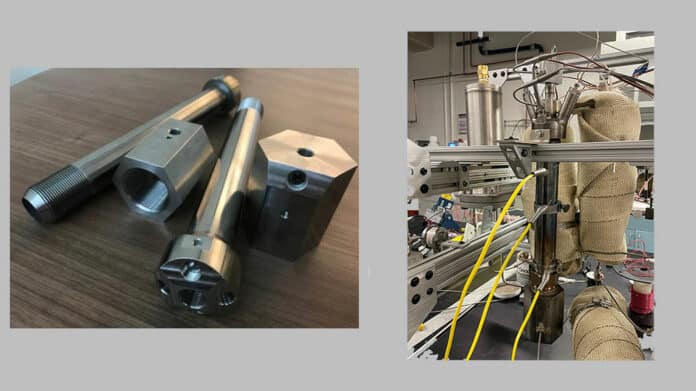Forever chemicals persist in water and soil. As they don’t break down, they end up in our water and food, leading to health effects such as cancer, and decreased fertility.
Last month, the U.S. Environmental Protection Agency proposed giving two of the most common forever chemicals, PFOA and PFOS, which allowed scientists to track them and plan cleanup measures.
Now a team of researchers at the University of Washington has a new way to destroy PFOA and PFOS. They came up with a new reactor- that uses supercritical water, which is formed at high temperature and pressure- to break down hard-to-destroy chemicals completely. This technology may treat old stocks, such as the forever chemicals in fire-fighting foam, remove concentrated forever chemicals already present in the environment, and treat industrial waste.
Igor Novosselov, a UW research associate professor of mechanical engineering, said, “Our reactor basically heats water very fast, but it heats water differently than when you boil it for pasta. Typically, when you raise the temperature, water boils and turns to steam. From there, the water and steam do not get hotter than 100 degrees Celsius (212 F).”
Compressing water can shift that equilibrium and get that boiling point at much hotter temperatures. Increasing the pressure can increase the boiling temperature.
The water will eventually stop changing states from liquid to vapor. Instead, it reaches a critical point where water enters the supercritical phase, a distinct state of matter. Water is not a liquid or a gas in this instance. It falls somewhere in the middle, and the boundaries are a little hazy.
The water molecules resemble ionized particles in a plasma-like state. These partially separated molecules oscillate at very high temperatures and very fast rates. Organic molecules cannot survive in such an aggressive and highly corrosive environment.
Novosselov said, “Chemicals that survive forever in normal water, such as PFOS and PFOA, can be broken down in supercritical water at a very high rate. If we get the conditions right, these recalcitrant molecules can be destroyed, leaving no intermediate products and yielding only harmless substances, such as carbon dioxide, water, and fluoride salts, often added to municipal water and toothpaste.”
“We originally designed it to break down chemical warfare agents, which are also hard to destroy. It took us five years to make the reactor.”
“There were significant questions such as, how do we keep things at that pressure? Inside the reactor, the pressure is 200 times higher than at sea level. Another question we had was: How do we ensure that the reactor ignites and operates at a designated temperature in continuous mode?”
How does the reactor work?
The reactor contains a thick stainless steel pipe about a foot long and an inch in diameter. Scientists can vary the temperature inside to figure out how hot they need to go to destroy a chemical. Some chemicals require 400 C (752 F), and some 650 C (1202 F).
Scientists continuously introduce pilot fuel, air, and the chemical we wish to eliminate, like PFOS, into the supercritical water at the top of the reactor. The fuel provides the heat required to keep the combination supercritical, and the PFOS quickly combines with this aggressive medium.
Overall, the reaction time is less than a minute.
Novosselov said, “At the bottom of the reactor, the mixture is cooled down to yield both liquid and gas discharge. We can analyze what’s in both the liquid and the gas phases to measure whether we’ve destroyed the chemical.”
Scientists performed the same experiment with PFOS and PFOA. The EPA regulates them both. It was found that PFOA goes away at mild supercritical conditions (around 400 degrees C or 750 F), but PFOS doesn’t. It took until we reached 610 degrees C (1130 F) to see the destruction of PFOS.
At that temperature, PFOS and all intermediates were destroyed — in a matter of 30 seconds.
PFOS tests revealed that several intermediate compounds, including PFOA, can develop at lower temperatures. Some of these breakdown products emerged in the liquid phase, suggesting that effluent from manufacturing facilities using permanent chemicals may contain them. But other intermediates are coming out in the gas phase, which is problematic because gas emissions are not typically regulated.
Novosselov said, “These molecules contain fluorine, and we know these types of gases contribute to greenhouse effects. Right now, we don’t have a way to monitor the gas pollution in real-time, and we do not know how much we would produce or even their exact chemical composition.”
“We have a few next steps. We’ve been using the reactor to see how well it destroys other forever chemicals besides PFOS and PFOA. We also assess how well this technology could work for real-world scenarios.”
Journal Reference:
- Joanna Li, Igor V.Novosselov, et al. PFOS destruction in a continuous supercritical water oxidation reactor. Chemical Engineering Journal. DOI: 10.1016/j.cej.2022.139063
